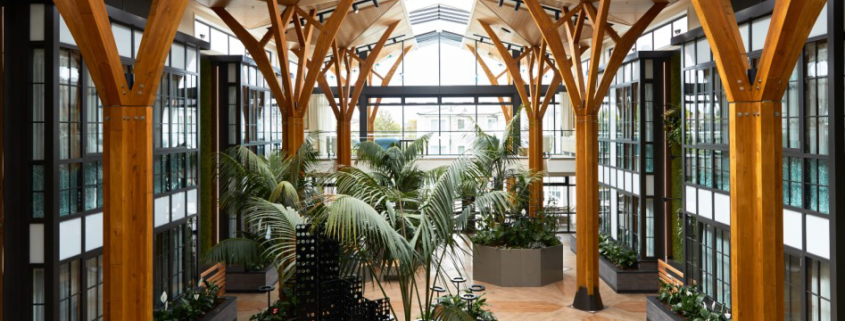RAWHITI ESTATE – New Zealand Retirement Living
New state of the art retirement village welcomes its first residents
Originally published RVA Newsletter 20/11/2018 – Download Full Newsletter
One of New Zealand’s most advanced assisted living environments has opened its doors with residents now moving in.
BeGroup’s flagship property, Rawhiti Estate, is one of the first retirement villages in the world to combine tablet-based technology and employee communication tools to help take the loneliness out of retirement and put the independence back in.
Residents can use the specially designed Care-Cohort tablets to order meals, movies, create digital pottery and artwork, and play games. They can also be used to video call family, friends and make direct calls to care professionals through small, wearable staff communication devices called Vocera badges.
Rawhiti Estate General Manager Helen Martelli says they are one of the first retirement villages to connect Care Cohort tablets to the Vocera badges, which she says is a significant step forward for resident safety.
“Traditionally, when residents need to get a carers attention, they push a button that rings through to the nurse’s station. Then they have to wait, without knowing whether the bell has been heard, or how soon someone will arrive.
“This can leave residents feeling vulnerable. We wanted to raise the bar and do things differently.
“With the tablet, residents simply touch the image of the nurse or carer they wish to speak to, it immediately dials through to the Vocera device, which is worn by our carers at all times, and the resident can tell them exactly what they need.
“Our planning estimates show it will save almost 5,200 hours a year for our staff, freeing them up to spend more quality time with the residents,” says Mrs Martelli.
Mrs Martelli believes technology has an important role to play in improving care for residents.
“Technology helps free up carer time and enables them to provide a stronger level of personal, connected care. We can see these trends emerging internationally and we are pleased to be able to introduce smarter systems to Rawhiti Estate,” she says.
Housed on the former Rawhiti Bowling Club site, Rawhiti Estate offers a full continuum of care with 27 independent living apartments, and 68 rest home and hospital level care suites, including safe and secure memory loss units.
It combines international design trends, world-first technology and an urban lifestyle in the heart of Auckland’s Remuera.
The estate is built and operated by the BeGroup, an independent New Zealand retirement village operator led by Guy Eady, former CEO and Chairman of Oceania who has more than 25 years in the retirement sector.
“When developing Rawhiti Estate, it was important to us to ensure we had a blend of independence, dignity and high standards of living, but in a state-of-the-art retirement village that still feels like home,” says Mr Eady.
All aspects of the assisted living and memory loss facilities; from high patient to staff ratios, discreet hoists and hospital grade beds and chairs, right through to the décor, fixtures, foods and even the lighting, have been designed to promote quality care and peace of mind.
BeGroup has used the latest global research into dementia triggers to create living areas, facilities and services that actively enhance the health of their residents, promote connections, companionship and genuine care for residents in the assisted living and memory loss suites.
Many of the traditional “clinical” aspects of rest home care have been designed out of the estate, including long institutional style corridors in favour of smaller, neighbourhood style communities within the village to help it feel like home.
It also has a strong commitment to art and features commissioned works by sculptor Paul Dibble and renowned painter Karl Maughan, alongside an additional 60 prints and lithographs by top New Zealand artists including Stanley Palmer, Michael Smither, Marilyn Webb and Dick Frizzell.
As well as displaying great art, BeGroup CEO Guy Eady says Rawhiti Estate will also work to provide access to creative activities for its residents.
“There is growing recognition of art as a therapeutic tool in different settings and a significant body of research is available which shows the various ways art can benefit people as they age. This includes supporting emotional wellbeing, reducing stress levels and reducing feelings of loneliness, as well as providing direct benefits to cognitive abilities.”
Mr Eady says the team looked closely at this type of research while designing Rawhiti Estate because it ties into their philosophy of care, which aims to ensure dignity for residents.
“Our hope is that having high quality art will provide an environment that people can enjoy and take inspiration from. When coupled with providing access to meaningful creative activities, we believe it provides a unique point of difference in the care we provide for our residents.”


